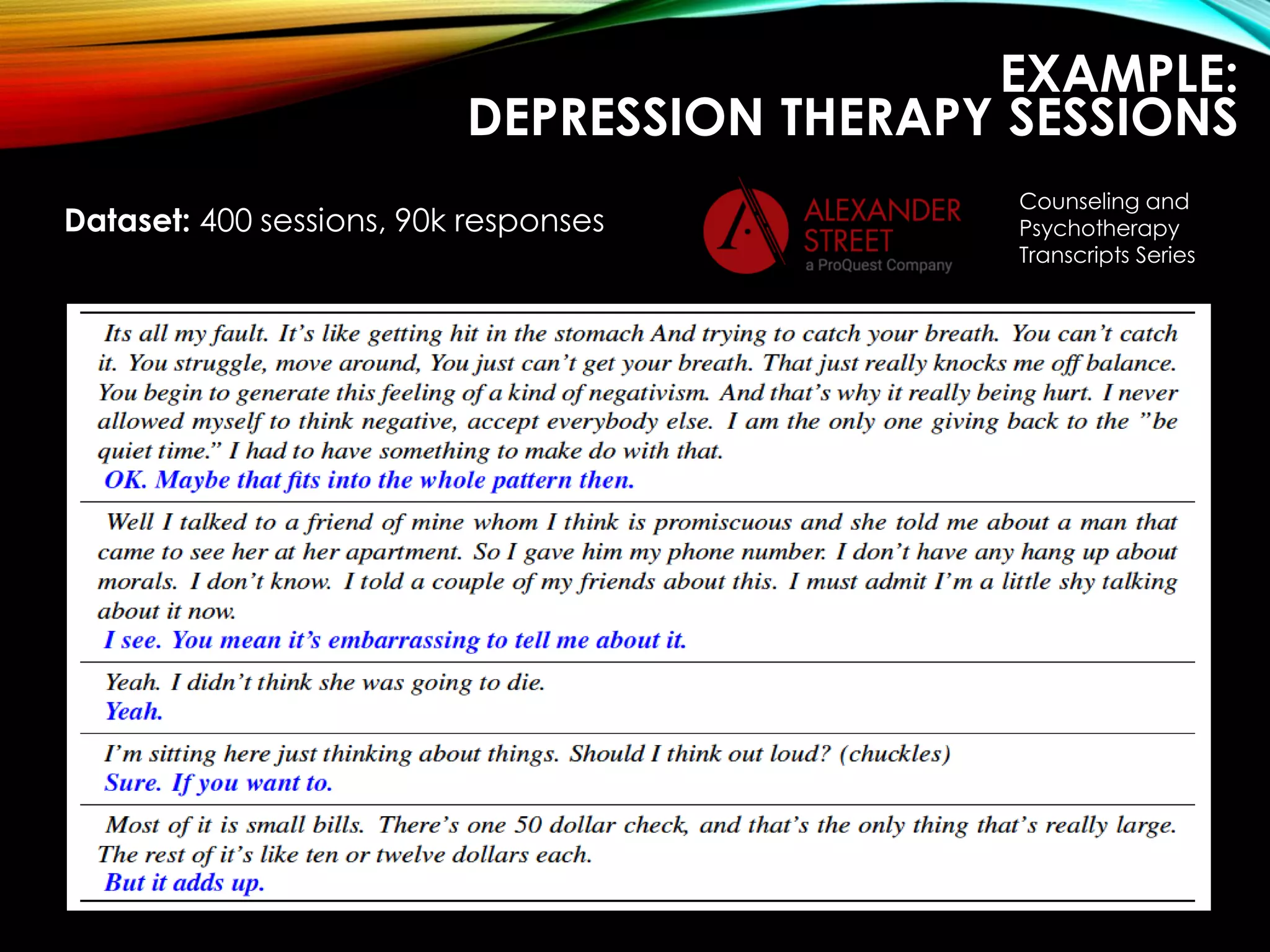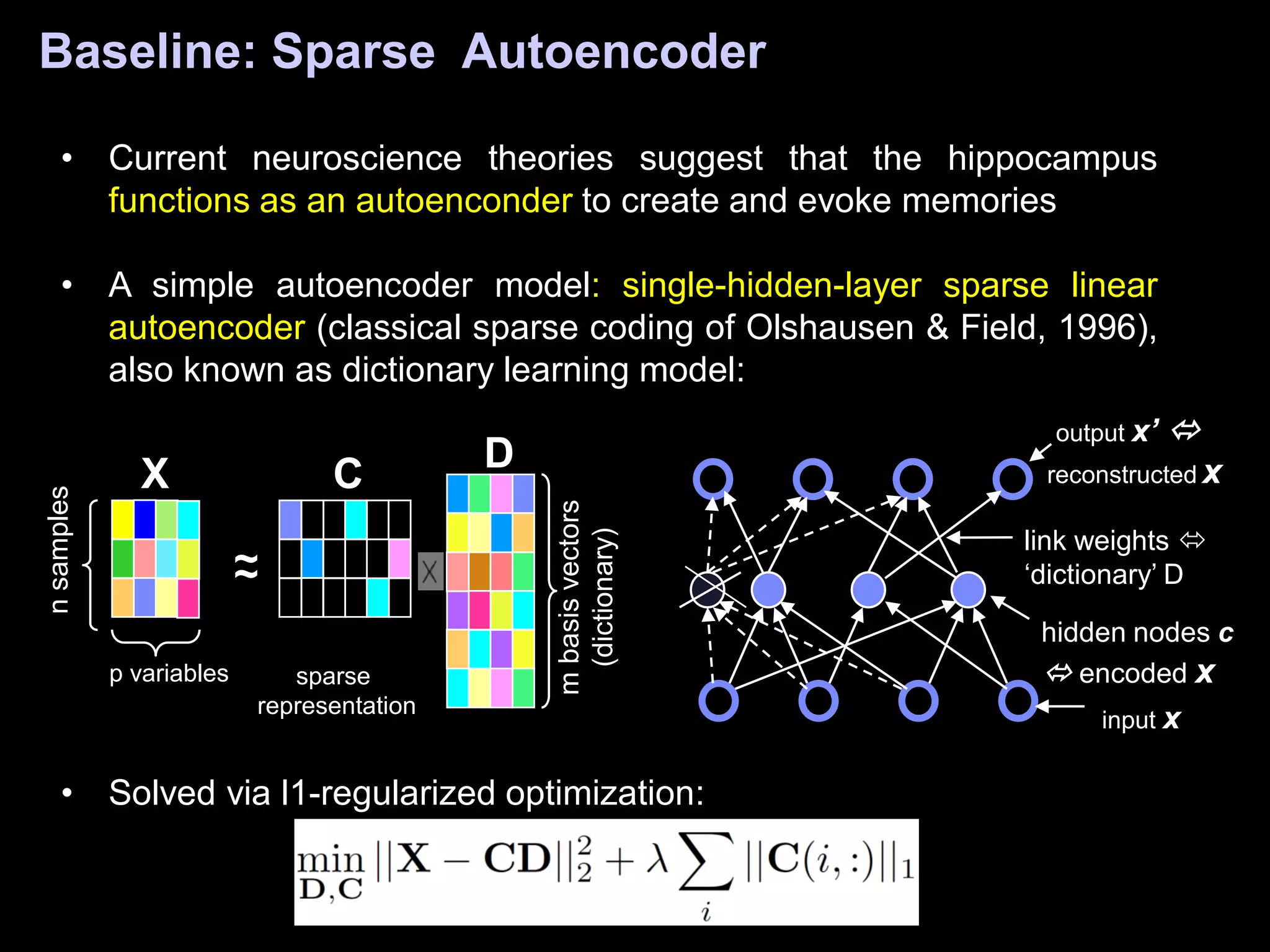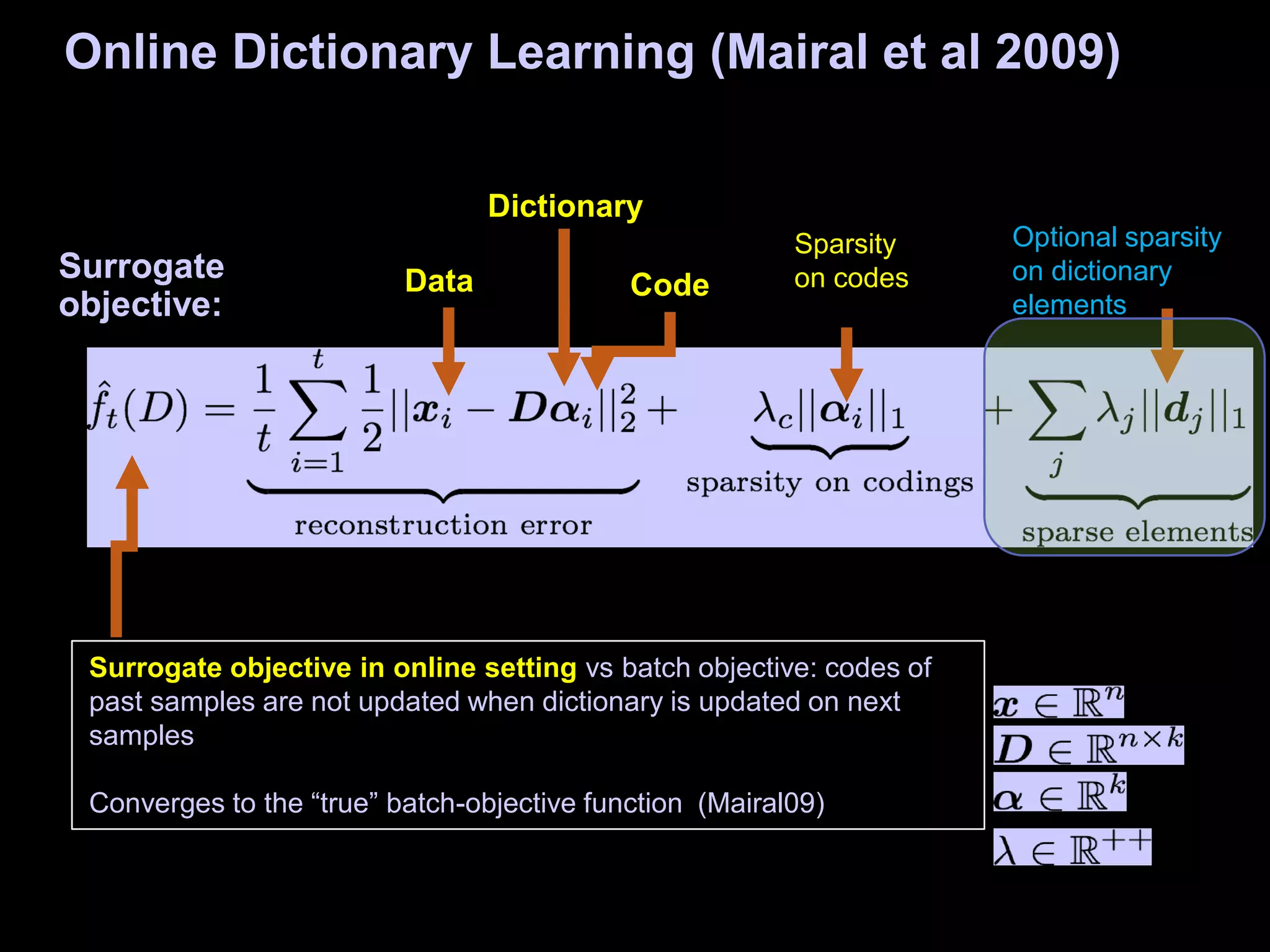This document discusses using neuroscience to inspire artificial intelligence algorithms and using AI to analyze neuroscience data. Specifically:
1. AI can be used to analyze neuroimaging data to discover biomarkers for mental disorders and predict mental states.
2. Dynamical models inspired by neuroscience, like the van der Pol oscillator model, can capture nonlinear dynamics in brain data and predict future activity.
3. Computational psychiatry aims to use AI to develop objective clinical tests and automated therapeutic agents like conversational agents to improve mental healthcare accessibility.



![[Cecchi et al, NIPS 2009]
[Rish et al, PLOS One, 2013
[Gheiratmand et al, Nature PJ
Schizophrenia 2017]
[Carroll et al, Neuroimage 2009]
[Scheinberg&Rish, ECML 2010]
Schizophrenia classification: 74% to 93% accuracy
symptom severity prediction
[Rish et al, Brain Informatics 2010]
[Rish et al, SPIE Med.Imaging 2012]
[Cecchi et al, PLOS Comp Bio 2012]
Mental states in videogames: sparse regression, 70-95%
Pain perception: sparse regression,
70-80% accuracy, “holographic” patterns
[Honorio et al, AISTATS 2012]
[Rish et al, SPIE Med.Imaging 2016]
Cocaine addiction: sparse Markov net biomarkers;
MPH effects analysis (“stimulant 4 stimulant”)
[Bashivan et al, ICLR 2016]
Cognitive load prediction: 91% w/ recurrent ConvNets
AI 4 NEURO:
NEUROIMAGING DATA ANALYSIS
“Statistical biomarkers”:
+
++
+
- -
- --
Predictive Model
mental
disorder
healthy
[Abrevaya et al, 2018, submitted] Nonlinear dynamical models of CaI and fMRI](https://image.slidesharecdn.com/aiforneuroscienceneuroscienceforai-181121164850/75/AI-for-Neuroscience-and-Neuroscience-for-AI-4-2048.jpg)

![Why use van der Pol?
1. Oscillatory behavior is common in
all neural systems; van der Pol is
simplest nonlinear oscillator with
rich enough behavior.
2. Voltage-like x1 (activity), and
recovery-like x2 (excitability),
similarly to neuro literature
[Izhikevich 2007]
DYNAMICAL MODEL:
VAN DER POL OSCILLATOR
i-th observed variable
i-th hidden variable
parameters
W – interaction “network"
alphas – determine the bifurcation diagram of the system
Observed
(activity)
Hidden
(excitability)
How to best estimate oscillator parameters from data?
Not a mainstream problem - neither in machine learning, nor in physics!](https://image.slidesharecdn.com/aiforneuroscienceneuroscienceforai-181121164850/75/AI-for-Neuroscience-and-Neuroscience-for-AI-6-2048.jpg)
![Parameter fitting:
stochastic search + variable-projection optimization [Aravkin et al, 2016]
VAN DER POL MODEL:
DATA FIT + INTERPRETABILITY
Interpretability: learned W
gives Interaction strength
among brain areas
0.7-0.8 correlation between the
model and the actual data](https://image.slidesharecdn.com/aiforneuroscienceneuroscienceforai-181121164850/75/AI-for-Neuroscience-and-Neuroscience-for-AI-7-2048.jpg)





















![Decision: e.g., image
class,type of medication,
ad on webpage etc.
“External” attention:
input selection [IJCAI 2017]
• Inspiration: visual attention (foveation,
sequence of glimpses)
• Recent neuroscience literature suggests that
attention is a reward-driven mechanism which
in turn drives the future reward
Reward
Reward-Driven Attention: External and Internal
input
x1
x2
1st level
embeddings
f11
f21
fn1
x
N
f12
f22
fn2
f1m
f2m
fnm
. . .
Last level
embeddings
output
r
y1
y2
y
m
“Internal” attention as dynamic execution / network path selection [AAMAS 2018]](https://image.slidesharecdn.com/aiforneuroscienceneuroscienceforai-181121164850/75/AI-for-Neuroscience-and-Neuroscience-for-AI-29-2048.jpg)
